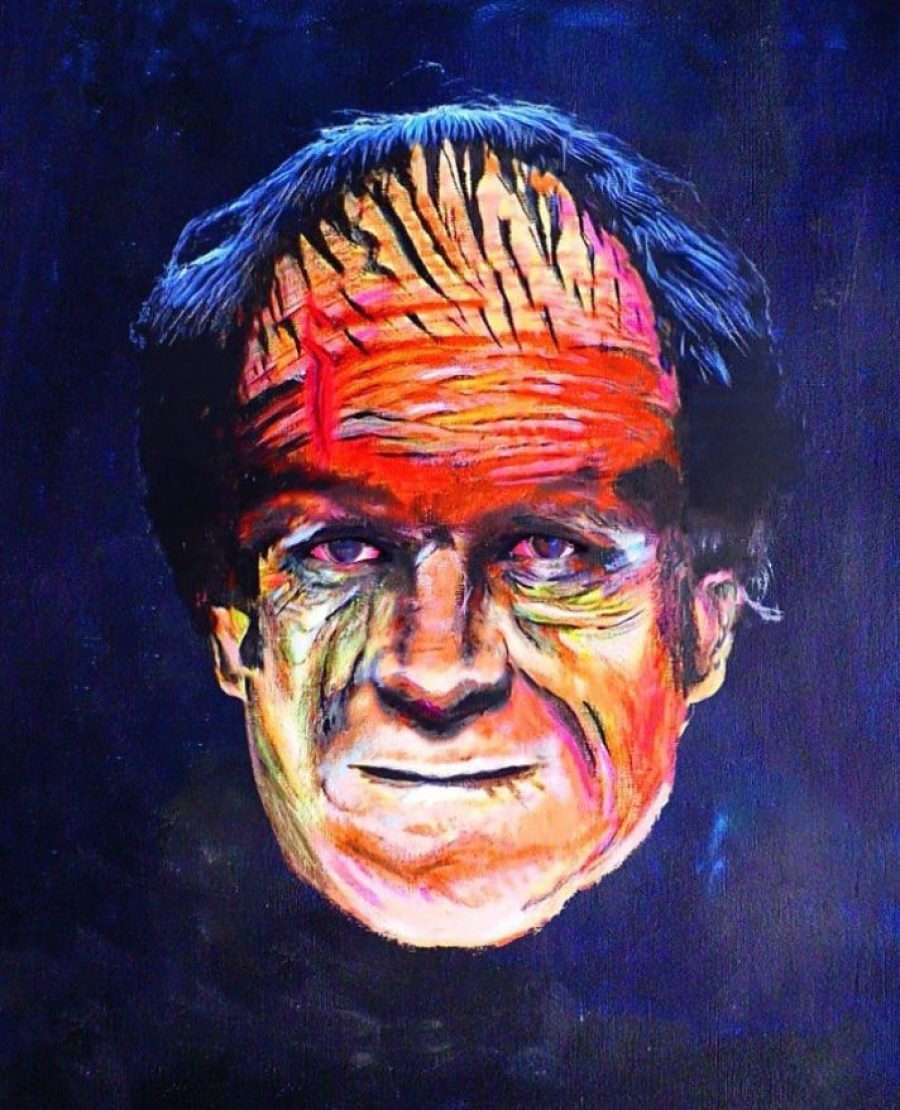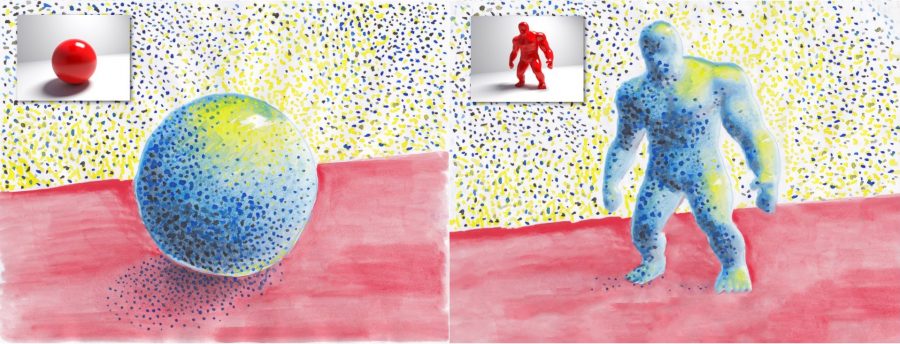DANIEL SÝKORA
Daniel Sýkora (*1978) developed an algorithm to turn the 2D animated film The Lion King into a 3D visual spectacle. He conducted his work in cooperation with several institutions, one of them being the Walt Disney Animation Studios.

Daniel Sýkora demonstrated the possibilities of the program in his portrait; CTU FEE
Description of the most important achievement
Until recently, cartoon makers had two separate techniques at their disposal. Using the first, the animator manually draws thousands of phased images according to the artist’s artwork. The second approach uses 3D digital models of characters and objects created with the computer. The combination of both methods has only been accomplished with advanced graphic tools. But production of such films is very expensive and takes a long time. The break came with algorithms generated by the research team of Daniel Sýkora. For example, StyLit, created in collaboration with Adobe, allows you to transfer hand-drawn artwork to computer animation while respecting artistic style.
It is enough for the artist to draw a simple shape, such as a ball and the algorithm can automatically transfer its art style to a more complex object in motion, such as the animation of human figures. Another algorithm, LazyBrush, is probably one of the most effective ways to color animated images. The artist just roughly sketches the colors, for example, on a sailboat – brown on the hull, yellow on the flag, white on the sails and ochre on the sailors’ faces – the algorithm guesses how to color it in seconds. Another algorithm, Tex Toons, transfers brush strokes to images and can convert a constant color into a more complex texture that track the movement of cartoon characters.

Example of conversion from 2D to 3D; CTU FEE
So far, the most advanced algorithm, Ink-and-Ray, was created at the Walt Disney Animation Studios. It can give the cartoon image depth and create a stereoscopic image. It opened the way to 3D conversions of classic cartoon films, as was first demonstrated by the 3D version of the Lion King.

Biography
Daniel Sýkora graduated from the Faculty of Electrical Engineering at the Czech Technical University in Prague, where he also acquired a PhD in the field of computer science in 2007. He then spent two years at a post-doctoral study at Trinity College in Dublin. But Sýkora did not leave his alma mater for a long time, and has returned, lecturing at the Department of Computer Graphics and Interaction, and also leads a team of students. In 2009, he received an offer from the Walt Disney Animation Studios to go to Hollywood and exhibit his skills. The Americans invited him on the basis of his paper on the LazyBrush algorithm. He also worked with the Anifilm studios, where he participated in the creation of the animated bedtime story Doctor Animo. For Digital Media Production and UPP he colored the first series of animated evening stories about Rumcajs. He is currently cooperating with the American company Adobe. Asides from Prague, he lectures at the University of Utah. He is married, with two daughters and two stepsons.

Award
“Among the best moments of collaboration with Daniel was the moment when one artist, after looking at the final form of the project, said the result looked like he was creating it himself,” said Paul Asente of Imagination Lab, Adobe Research.
S



